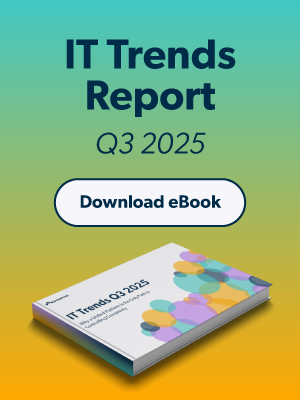Updated on September 17, 2025
A Ticket-Granting Ticket (TGT) is a cryptographic credential used in the Kerberos authentication protocol. It serves as a central component of Kerberos, functioning as a master key that allows a user to request access to various network services without re-entering their password for each service.
The TGT is issued by the Key Distribution Center (KDC) and is fundamental to the protocol’s single sign-on (SSO) functionality. This mechanism streamlines user authentication across distributed networks while maintaining robust security standards.
Understanding the TGT’s role is essential for network administrators and cybersecurity professionals implementing Kerberos-based authentication systems. The TGT enables secure, efficient access management in enterprise environments where users need to authenticate to multiple services throughout their sessions.
Definition and Core Concepts
A Ticket-Granting Ticket (TGT) is an encrypted data structure issued to a client after they have successfully authenticated with the Kerberos KDC. The TGT contains several critical components that enable secure authentication.
The TGT includes the client’s identity, which uniquely identifies the authenticated user within the Kerberos realm. It also contains a unique session key for secure communication between the client and the Ticket-Granting Service (TGS). Additionally, the TGT includes a timestamp and validity period that defines when the ticket expires.
The TGT is encrypted with the KDC’s secret key, ensuring that only the KDC can decrypt it. This encryption prevents unauthorized modification or forgery of the ticket. The TGT is also packaged with a copy of the session key, which is encrypted with the client’s password hash, allowing the client to securely retrieve the session key.
The TGT’s primary function is to serve as proof of a user’s initial authentication. Once obtained, a client presents the TGT to the Ticket-Granting Service (TGS) to request service tickets for specific applications or resources. This eliminates the need for repeated password entry across multiple services.
How It Works: The Kerberos Authentication Flow
The TGT is central to the first two steps of the Kerberos authentication process. These steps establish the foundation for secure access to network resources.
Authentication Service (AS) Exchange
The Authentication Service exchange represents the initial authentication phase where the client obtains their TGT. The client sends a request to the KDC’s Authentication Service (AS) for a TGT, including its username in the request.
The KDC verifies the username against its database and sends back two encrypted messages. The first message is the TGT itself, encrypted with the KDC’s secret key. The second message contains a session key, encrypted with the client’s password hash.
The client uses its password to decrypt the session key from the second message. However, the client cannot decrypt the TGT itself, as it is meant to be read only by the KDC’s TGS. This design ensures that the TGT remains secure while in the client’s possession.
Ticket-Granting Service (TGS) Exchange
The TGS exchange occurs when the client needs to access a specific network service. To access a new service, the client sends a request to the TGS that includes the TGT and the name of the desired service.
The TGS uses its ability to decrypt the TGT to authenticate the client’s identity. If the client is authorized to access the requested service, the TGS issues a service ticket for that specific service. The service ticket contains a new session key that the client uses to communicate securely with the application server.
This two-step process allows the client to obtain multiple service tickets using the same TGT. The client avoids having to re-authenticate with a password for each service, improving both security and user experience.
Security Properties and Considerations
The TGT represents a highly sensitive credential within the Kerberos protocol. Its security is paramount to maintaining the integrity of the entire authentication system.
Encryption and Integrity Protection
The TGT is encrypted with the KDC’s secret key, preventing tampering and forgery by malicious actors. This encryption ensures that only authorized KDC components can read or modify the ticket contents. The cryptographic protection maintains the TGT’s integrity throughout its lifecycle.
Time-Limited Validity
TGTs have a finite lifespan that reduces the window of opportunity for an attacker to use a stolen ticket. The typical default validity period is 10 hours, though administrators can configure this based on security requirements. When a TGT expires, the client must re-authenticate to obtain a new ticket.
Replay Attack Protection
The Kerberos protocol uses timestamps and nonces to prevent attackers from replaying a captured TGT. These mechanisms ensure that each authentication request is unique and cannot be reused maliciously. The protocol validates timestamps against acceptable time windows to detect replay attempts.
Session Key Security
The session key embedded in the TGT ensures that the client and the TGS can securely exchange information. This key enables the generation of new service tickets without compromising the overall security of the authentication system. Each session uses unique cryptographic material that cannot be reused across different authentication sessions.
Compromise Scenarios and Mitigation
Compromise of a user’s TGT can give an attacker unauthorized access to network resources. Common attack vectors include “Kerberoasting” attacks that target service account credentials and “Golden Ticket” attacks that forge TGTs using compromised KDC keys.
Proper KDC security measures are essential to protect against these threats. Network administrators should implement monitoring systems to detect unusual TGT usage patterns. Regular key rotation and strong access controls for KDC infrastructure help minimize the impact of potential compromises.
Security teams should also monitor for anomalous authentication patterns that might indicate TGT abuse. Implementing network segmentation and least-privilege access principles reduces the potential damage from compromised tickets.




